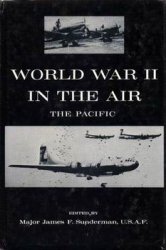The milieu of Latin translations of Arabic philosophical texts changed considerably in the thirteenth century with secular rulers, most notably Frederick II Hohenstau-fen (reg. until 1250) and Alfonso X of Castile and Leon (reg. 1256-1284), providing patronage and taking a personal interest. This was crucial for the transmission of Arabic philosophical and scientific ideas into western Europe.
Frederick hosted at his court Michael Scot, Theodore of Antioch (who translated the Moamin from Arabic for Frederick, arguably the most influential medieval text on falconry), and Jacob Anatoli who translated Averroes’ Middle Commentaries on the Isagoge, the Categories, De interpretatione, and the Prior and Posterior Analytics from Arabic into Hebrew. Subject of the debates at court was also the Guide of the Perplexed which Maimonides had written in Arabic and of which Frederick may have commissioned a Latin translation. With the University of Naples, founded by Frederick in 1224, the emperor contributed to the creation of the intellectual context in which the ideas included in the Arabic texts were most vividly received, debated, and adapted.
Michael Scot was probably the most important translator of the thirteenth century. Having started his career in Toledo, where he translated Aristotle’s books on animals, he spent time in Rome and Bologna and established himself at Frederick’s court in Sicily in the 1230s. In his Italian phase, Michael translated Avicenna’s Abbreviatio de animalibus, Averroes’ Long Commentaries on the Physics, De caelo, De anima, and the Metaphysics, the Middle Commentaries on De generatione et corruptione and parts of De animalibus, the Epitome of De caelo, De animalibus, and Parva naturalia, Averroes’ De substantia orbis, and the treatise on the intellect by Averroes’ son mentioned above. Because of their less literal style, these translations were more intelligible than earlier ones and became very popular. The books on animals, for example, were important sources for Albert the Great’s works on the subject who based his Quaestiones super libris de animalibus on these translations. In addition to the translations, Michael left his own trace as the author of the Liber introductorius consisting of the Liber quatuor distinctionum (an introductory compendium of natural sciences), the Liber particularis which includes questions from Frederick, and the Liber Physiognomie. Preliminary studies of the text suggest that it is informed by Arabic sources. Michael’s translations of Averroes’ Long Commentaries are particularly important since they provided new translations of the complete texts of Aristotle’s corresponding works.
Another key text for questions relating to soul and intellect possibly translated by Michael was Averroes’ Long Commentary on De anima which is not preserved in the Arabic original. Averroes’ commentary contained crucial material for later debates about Averroism and the Parisian condemnations of 1270 and 1277, in particular what is usually interpreted as the denial ofthe immortality of the individual soul in favor of an intellect common to all humanity and the resulting conflict with revealed religion. Another doctrine associated with Averroism is the eternity of the world that had already been the matter of great debate in Arabic sources. Texts such as al-(Gazall’s Maqasid al-falasifa or Maimonides’ Guide for the Perplexed offered Latin authors a variety of arguments for and against this theory (Davidson 1987).
The project was continued under Frederick’s son Manfred and Charles of Anjou. William of Luna translated at Manfred’s court Averroes’ Middle Commentaries on the Isagoge, the Categories, and probably De interpretatione, possibly also the Prior and Posterior
Analytics, even though these texts did not exercise a great influence. Manfred himself is mentioned in the prologue to the text as having translated the pseudo-Aristotelian Liber de pomo, but he was probably only the patron. An enormously influential pseudo-Aristotelian text is the “Furstenspiegel” Secretum secretorum, translated from Arabic into Latin by Philipp of Tripoli, a high-ranking man of the church. Philosophy was less important among the texts translated at Alfonso’s court where the interest in astrology and astronomy dominated. In addition to this patronage, the exchanges between Latin scholars and Arabic native speakers became more frequent and vivid, and Latin scholars developed a more independent attitude to Arabic philosophy.
Translations mostly stopped at the end of the thirteenth century. A notable exception is the translation of Averroes’ Tahafut al-Tahafut (The Incoherence of the Incoherence) in 1328 for Robert of Anjou, King of Naples. Until then, only Averroes’ more strictly philosophical texts had been translated. Arabic philosophical texts were also used and translated among Catalan missionaries of the period. Ramon Llull (1232-1315) who campaigned successfully for the foundation of schools to teach Arabic to future missionaries composed a Latin prose and a Catalan verse version of the logic of al-GGazall’s Maqasid al-falasifa. In his Pugio fidei, the Dominican Ramirn Marti (c. 12201285) used a variety of Arabic texts not available in Latin at that point, among them Farabi’s commentary on the Physics, Avicenna’s Pointers and Reminders and Kitab al-najat, various texts by al-GGazall (Tahafut al-falasifa, al-Munqidh min al-dalal, Mtzan al-amal, Mishkat al-anwar, Iliya’ ‘ulum al-di. n, KitaB al-tawba and al-Maqsad), and Averroes’ Tahafut al-Tahafut and Damtma. The writings of Albert the Great too show evidence of the knowledge of Arabic works which had not been translated comPletely into Latin.
The translations were resumed in the Renaissance due to the perceived necessity to revise the poor Latin style of the medieval versions. As in earlier centuries, Jewish translators and scholars were of great significance for the further transmission. At least 38 of Averroes’ commentaries had been translated into Hebrew from the early thirteenth century onward, and scholars like GersonIdes had written super-commentaries on them. In the Renaissance, Latin translations of philosophical Texts originally written in Arabic were often based on Hebrew intermediary versions.
See also: > Albert the Great > Alexander of Aphrodisias And Arabic Aristotelianism > Alexandrian Tradition into Arabic: Philosophy > Arabic Texts, Jewish Translations of
> Arabic Texts: Natural Philosophy, Latin Translations Of > Aristotelianism in the Greek, Latin, Syriac, Arabic, And Hebrew Traditions > Aristotle, Arabic > Aristotle, Arabic: Physics > Aristotle, Arabic: Poetics > Astronomy And Astrology in the Arab World > Avicebron > Being
> Boethius > De caelo, Commentaries on Aristotle’s
> Dominicus Gundissalinus > Essence and Existence
> Ethics > al-FarabI, Abu Nasr > al-FarabI, Latin Translations of > al-(GazalI, Abu Hamid Mulrammad
> al-(Gazall’s Maqasid al-Falasifa, Latin Translation of
> Gerard of Cremona > Ibn Rushd (Averroes), Latin Translations of > Ibn Rushd, Muhammad ibn Ahmad al-Hafid (Averroes) > Ibn Sina, AbU ‘All (Avicenna) > Ibn Sina (Avicenna), Latin Translations of > Isaac Israeli
> al-Kindi, AbU YUsuf Ya‘qub ibn Isljaq > al-Kindi, Latin Translations of > Liberal Arts > Logic, Arabic, in the Latin Middle Ages > Logic in the Arab and Islamic World
> Metaphysics > Mirrors for Princes > Moses Maimoni-des > Natural Philosophy > Natural Philosophy, Arabic
> Nicomachean Ethics, Commentaries on Aristotle’s
> Parisian Condemnation of 1277 > Philosophical Psychology > Philosophy, Arabic > Philosophy, Jewish
> Posterior Analytics, Commentaries on Aristotle’s
> Prior Analytics, Commentaries on Aristotle’s > Proclus, Arabic > Ramon Llull > Roger Bacon > Schools in the Twelfth Century > Themistius, Arabic > Thomas Aquinas
> Translations from Greek into Arabic > Universities and Philosophy




 World History
World History









